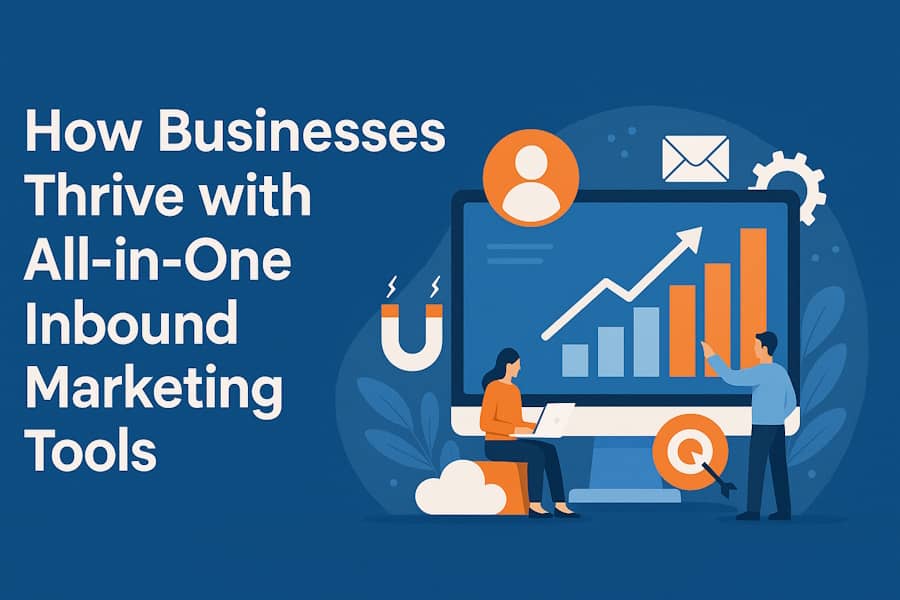The digital marketplace never stops moving. Every second, potential customers are discovering new brands, exploring options, and making decisions faster than ever before. In this constant flow, standing out isn’t just about selling a great product; it’s about building connections that last. That’s where inbound marketing and sales platforms prove their worth. These systems give businesses the ability to attract, engage, and convert customers in ways that feel personal and authentic. Through thoughtful strategy, automation, and insight, they bring structure to what can often feel like chaos. With HubSpot onboarding serving as the foundation, companies gain a clear path toward aligning their marketing and sales efforts, ensuring data flows seamlessly across teams while customer relationships grow stronger with every interaction.
The Shift from Traditional Marketing to Inbound
There was a time when marketing meant casting a wide net and hoping for the best. Print ads, cold calls, and mass emails once dominated the landscape, but today’s audience expects more. People want to feel understood. They want content that speaks to their needs, not just promotions that fill their inboxes. Inbound marketing emerged from that very idea, the belief that attracting customers through valuable, relevant content builds trust far better than aggressive outreach.
Instead of chasing customers, inbound marketing draws them in through a blend of strategy and storytelling. Blogs, social media, and SEO aren’t just tools; they’re touchpoints that help businesses meet customers where they already are. The right inbound approach feels less like selling and more like helping, guiding potential clients toward a solution that genuinely fits their needs.
The All-in-One Advantage
Running multiple marketing systems can feel like juggling with too many balls in the air. One for emails, another for social media, a separate one for analytics, and none of them speaking to each other. That’s where all-in-one inbound marketing tools change the game. Inbound marketing platforms bring together every piece of the puzzle, creating a connected ecosystem where marketing, sales, and customer service work in harmony.
This type of integration isn’t just convenient, it’s powerful. Every data point feeds into a single system, allowing teams to track customer journeys from the first website visit to the final purchase. When everyone works from the same information, strategies become sharper, follow-ups feel more personal, and clients experience a level of consistency that builds loyalty over time.
It’s no secret that alignment between departments can be a struggle in many organizations. Marketing focuses on generating leads, sales concentrates on closing deals, and both often measure success differently. But when all tools are connected, that divide disappears. The result is better communication, fewer missed opportunities, and a smoother experience for customers from start to finish.
Why Cloud-Based Solutions Lead the Way
Cloud-based systems have completely redefined how companies manage information. They eliminate the need for complicated installations or constant manual updates, making it easier to scale as the business grows. In an environment where speed and accuracy matter, being able to access real-time data from any device is a major advantage.
With everything stored securely in the cloud, collaboration becomes effortless. A marketer updating a campaign in one location can instantly see those results reflected in the analytics dashboard, while a sales representative can view updated customer details before the next meeting. That kind of synchronicity not only improves efficiency but also gives every team member a complete view of the customer’s journey.
It’s also worth noting that automatic updates mean software is always running at its best. There’s no waiting for IT to install patches or fix bugs, new features simply appear, ready to use. That reliability saves both time and stress, keeping everyone focused on what matters most: building meaningful relationships with customers.
Turning Data into Action
In marketing, information is only as good as what’s done with it. All-in-one platforms make it easier to move from insight to action without delay. Real-time analytics reveal what’s working and what isn’t, giving teams the power to adjust strategies on the spot. Instead of relying on assumptions, every decision can be backed by evidence.
For instance, by tracking visitor behavior, companies can see which content attracts the most engagement or where leads drop off during the sales process. That knowledge makes it easier to refine campaigns, strengthen weak points, and deliver content that resonates more deeply. The ability to adapt quickly is what keeps businesses competitive in a fast-moving digital world.
The Role of Automation in Efficiency
Time is one of the most valuable resources any business has, and automation ensures it’s never wasted. Tasks that once took hours, like sending follow-up emails, managing lead lists, or scheduling posts, can now be done automatically. That consistency doesn’t just free up time; it also eliminates human error.
What’s remarkable about automation within inbound systems is its ability to remain personal despite its efficiency. Each message, workflow, and touchpoint can be customized to fit the customer’s behavior, ensuring communication still feels genuine. It’s like having an extra set of hands that never forgets a detail.
Building Lasting Customer Relationships
Customer relationships aren’t built through one transaction, they’re built over time through consistency, trust, and communication. Inbound marketing tools help maintain that connection long after the initial sale. Whether it’s through follow-up campaigns, satisfaction surveys, or loyalty programs, these platforms keep engagement strong.
What sets successful companies apart is their ability to treat customers not as numbers, but as people with ongoing needs and evolving goals. With a unified system tracking every touchpoint, it becomes easier to understand those needs and respond proactively. That kind of attention doesn’t go unnoticed, it builds loyalty that competitors can’t easily replicate.
When data flows smoothly between teams, everyone gains a shared understanding of the customer’s journey. Marketing knows what messages resonated most. Sales understands what concerns arose before the purchase. Service teams can anticipate potential issues before they happen. It’s a circle of connection that keeps the customer experience strong at every stage.
The Simplicity of Scalability
Growth often introduces complexity, but technology should make scaling easier, not harder. All-in-one inbound marketing tools are designed to grow alongside businesses, adapting to new goals, larger audiences, and expanding teams. Adding users, launching new campaigns, or entering new markets becomes effortless because everything is centralized and cloud-supported.
There’s also flexibility in how features evolve. A small business might start with simple automation and lead tracking, while larger companies can integrate advanced CRM tools, analytics, and service hubs. It’s not a one-size-fits-all model, but a system that adjusts as needs change. That scalability ensures no time or investment is wasted as the business evolves.
Why Integration Means Better Results
Integration is often the unsung hero of successful marketing strategies. When every tool and department is synchronized, the results are measurable and meaningful. Campaigns become more targeted, follow-ups become more timely, and customers receive a consistent experience across all channels.
Consider how frustrating it can be for a client to repeat the same information multiple times to different departments. Integrated systems eliminate that gap. With shared data, every team member knows the client’s history, preferences, and current status. It’s the kind of seamless experience that customers remember, and recommend.
This level of connection doesn’t just enhance efficiency; it amplifies impact. Every ad, email, and conversation works toward the same objective. There’s no wasted effort, no conflicting messages, and no confusion about priorities. The result is a business that operates like a well-tuned orchestra, each instrument playing its part perfectly.
The Human Touch Behind the Technology
While automation and analytics drive inbound marketing, the human element remains at its heart. Technology provides the framework, but it’s the creativity and empathy of the people using it that truly bring it to life. The best inbound strategies are grounded in understanding, the ability to recognize what customers value most and deliver it consistently.
This balance of innovation and humanity defines modern marketing. Tools make processes smarter and faster, but it’s genuine communication that keeps customers coming back. That blend of efficiency and care is what sets thriving businesses apart from those merely keeping up.
The Future of Inbound Marketing
As technology continues to evolve, the lines between marketing, sales, and service will blur even more. Artificial intelligence, predictive analytics, and deeper personalization will shape the next generation of inbound tools. But the core principle will remain the same: helping businesses connect meaningfully with their audiences.
Those who embrace these all-in-one systems early position themselves ahead of the curve. They gain not just better tools, but a smarter way of working, a way that turns everyday interactions into lasting relationships.
Inbound marketing isn’t just about attracting attention; it’s about earning it. With connected tools, real-time data, and thoughtful strategy, businesses can build trust, inspire loyalty, and create growth that lasts well beyond the first sale.
And in a digital world that never stops changing, that kind of connection is what truly drives success.








